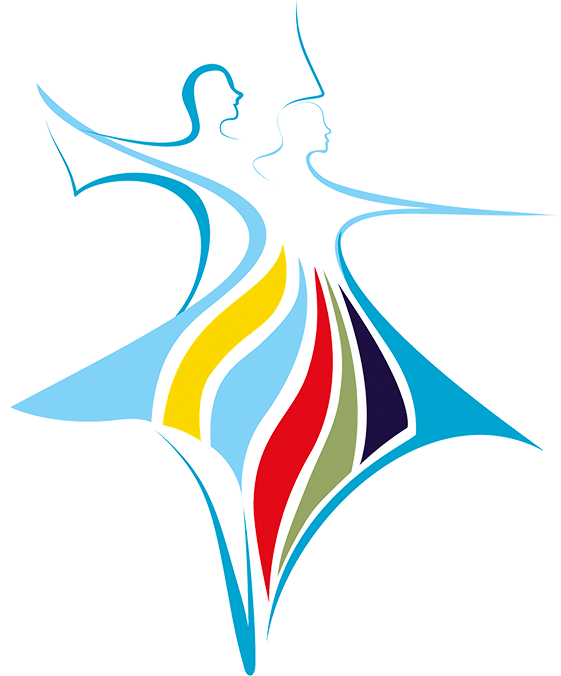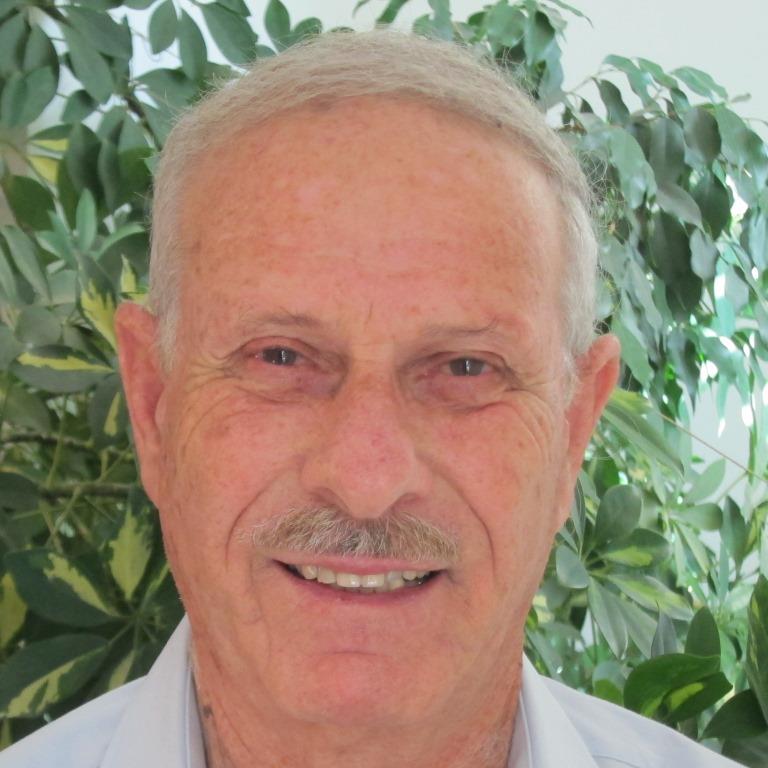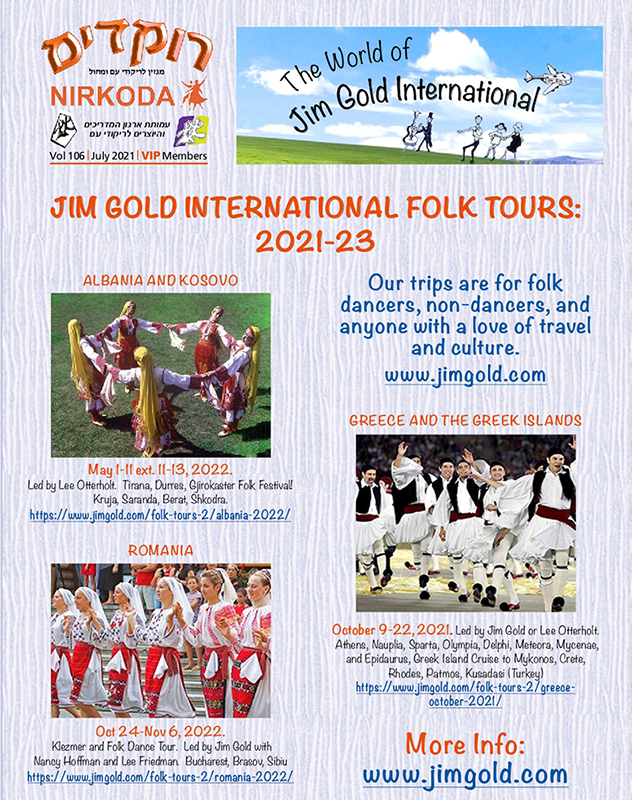- Home
- Rokdim Nirkoda 106
- Banishing the Darkness
Chanukah, the holiday of lights for the people of Israel, is literal as well as metaphorical for them. Those for whom the world is mostly in darkness because of their blindness, have found their special light on the dance floor. This phenomenon is unique to Israel and probably will not be found anywhere else in the world: The blind dancing Israeli folk dances. During the holiday, two effervescent and invigorating dance troupes joined the hundreds of people at the dance sessions of Elad Shtamer in Ra’anana and Gadi Bitton in Kfar Saba (during Chanukah 2019, before Corona). It was heartwarming to watch “Nigun Atik”, “Eretz Eretz”, Erev Ba” and other dances from the Israeli repertoire being happily danced by both sighted and blind people together.
Two skilled dance instructors are responsible for this wonderful phenomenon – Yossi Tfilin and Zohar Bartal. They have been leading this special initiative with their full heart and soul for many years. They are assisted by sighted volunteers who work regularly with the blind and dance circle and couple dances with them.
It’s not as easy as it looks. Learning the steps of a dance, which are sometimes complicated, can be difficult even for those dancers who can see well; all the more so for people with limited vision. The instructors invest all their methodical skills and their personal attention in order to impart the skills needed to learn the dances. And the results – are amazing.
Our super-instructors, Elad and Gadi, each lead their integrated sessions of dancers, and it’s often difficult to differentiate those with vision from the blind or those with limited vision. And the circle keeps moving and everyone is equal on the dance floor.
And here we have a double celebration. Shimi, who sees well with both eyes, noticed that Chaya, who is blind, was dancing next to him and he enjoyed watching her graceful steps. Love was born on the dance floor and the wedding, to everyone’s delight, was very posh. Congratulations to the dancing couple.
Yossi Tfilin – Light for the Blind
There are very few instructors with the strength and motivation to undertake and devote themselves to this far from simple task – teaching the blind to dance. The prominent ones, perhaps the only ones today, are Yossi Tfilin and Zohar Bartal. Also outstanding in this field was Orly Bar Or z”l.
In an interview for “Rokdim-Nirkoda”, Yossi Tfilin tells us about his background of rich experiences:
I once worked in a school and I organized folk dancing for the children during Friday recesses. I noticed a girl who was sitting at the side clapping her hands in time with the music, however, she didn’t join the circle of dancers. It became clear that the girl was blind and didn’t dare to join the group. I approached her in an attempt to get her to join her friends. However, they pestered her and complained that she was slowing them down. I suggested to both her and to her mother that she learn the dances at home during the afternoon. To everyone’s joy, this was very helpful and she became part of the dancing at school. This is where the “craziness” to devote myself to teaching the blind to dance began. I’ve now been active in this field for 26 years.
Yossi, tell us about the techniques, difficulties, successes and emotions:
It isn’t easy to teach the blind to dance to the music and to execute the dance steps dictated by the choreographer. A blind person stands in front of me. I kneel on my knees and move his/her legs according to the steps of the dance. Or I put his/her hands in front of my face through which I demonstrate the step or the hand movements. For them, spatial orientation is difficult, especially when they’re in a group and the steps to the dance demand that everyone moves in unison and in the same direction. After the instruction, we start to implement the dance and here the sighted partners come into the picture: They help guide the transfer of weight from side to side in place or while turning, as well as turning in the correct direction. Sometimes, I alter something in one of the dances to suit obvious limitations. And this is how my students and I have reached such a good level of dance and movement.
Who are the people, how are things organized, the sessions, the performing troupes?
At present, I work in Netanya and in Herzliya. I founded dance sessions and dance troupes. Each session includes eight blind persons and eight sighted volunteers. We meet once a week to learn and to dance in a space that was allocated to us by the municipality. This involves complicated logistics for commuting to the sessions. The cities help us and we receive some assistance from the Association For The Blind (Ha’Aguda LeMa’an Ha’Iver). The dancers pay a symbolic fee to participate. As mentioned in this interview, my ambition is to occasionally integrate the blind dancers into regular dance sessions with hundreds of dancers.
In time and as my creative abilities improved, I started a dance troupe for the blind following the example of the wheelchair dance troupes for the physically handicapped.
I prepared choreographies for performances and we performed at various venues such as Beit Loewenstein, assisted living facilities and at schools in Herzliya and Netanya, etc.
My dream had been to perform with the troupe at the Karmiel Festival and, indeed, we were invited to perform at the most prestigious of the events there – the opening performance of the festival. It’s true that my dancers don’t see the reactions of their audience but they hear the applause, the hand clapping and they feel the enthusiasm and emotion of the spectators surrounding them. It’s impossible to describe in words.
This troupe includes the members of both dance groups for a joint performance.
So the question is, Yossi, if this is so great why don’t more of the blind participate in this experience?
In Netanya there are about 700 visually impaired and blind people; in Herzliya there are about 200. During the years that I’ve been active, about 60 blind people have danced with me, most of them are of an advanced age. The answer to this question is simple – financing. The relevant institutions aren’t aware of the importance of this work. There’s no support from the Ministry of Welfare and very little from the municipalities. Herzliya supports us by providing rehearsal space and transportation but not enough to encourage more participants. The public is not aware of our needs and finding volunteers to accompany us isn’t easy, even though the work they do is sacred. Maybe this article will wake up those who should be involved and make them pay attention to the vital needs of the blind population in Israel.
Yossi Tfilin, married with two children, lives in Netanya. He worked as a maintenance person and today he is retired. He is a born volunteer and has helped the needy all his life. He assisted at the “Tirat Ha’yeled’ Institute, organized a large warehouse for clothing for the needy and organized food supplies to be brought to their homes. And this is just a partial list.
The enormous amount of work he has done with folk dancing for the blind, for 26 years, has been as a volunteer; his mission is evidence of his love for his fellow man.
Yossi was recently diagnosed with cancer and underwent four by-pass operations. Even in this difficult condition he hasn’t stopped instructing and leading the blind. He says that he has no intention of stopping, despite his physical condition.
And we say – Who other than Yossi Tfilin is worthy of being selected to receive the President’s Award for Volunteerism (Ot HaNassi Le’Hitnadvut)?









Comments
התראות